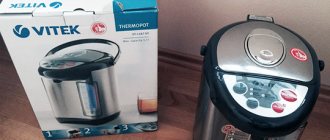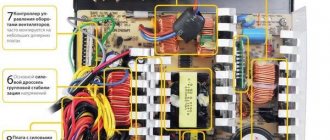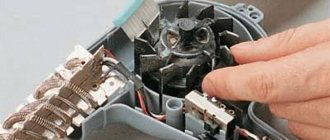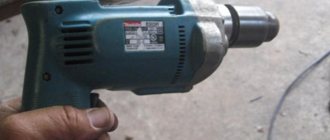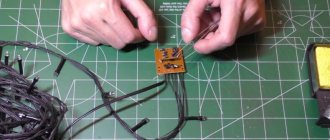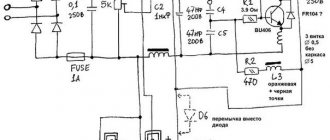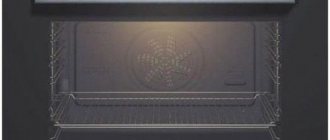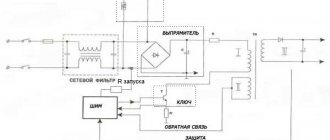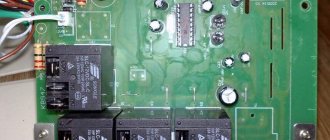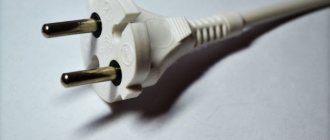Most problems arise due to the fact that a modern coffee brewing machine is an extremely technological device, the operating parameters of which are precisely calculated. Therefore, any violation, be it hard water, capsules not recommended by the manufacturer, or other grinding of grains, necessitates repairing the device or understanding how high-pressure systems work. But most simple problems can be fixed at home. Let's look at how to repair a coffee maker yourself.
General Security Issues
If you decide to independently examine the coffee maker and carry out repairs, then you should take basic safety measures:
- The device must be disconnected from the network.
- You need to work with a tool with insulated handles.
- Water and wet hands are a source of potential danger.
It is not difficult to disassemble the body of most coffee makers. Often it is enough to unscrew a few screws on the back cover. This makes it possible to gradually disassemble the device into units or large parts. At the same time, there are subtleties: on DeLonghi machines, the bolts located on the bottom are closed with plugs or are located under rubber feet, and many Saeko models additionally require the removal of fasteners to remove individual blocks, allowing access to the areas needed for repair.
To avoid mistakes, please refer to the reference information. If the coffee maker does not lend itself to logic and cannot be understood, it is better to look for data on the model on the Internet.
Many devices, in addition to the screws on the back of the case, also have latches that hold the top cover or bottom.
To find such fasteners, you will need a thin screwdriver or a knife, which is used to pass the line of the joint of the parts to the localization of the area where you can press the latch.
What does taste depend on, and which coffee maker makes coffee taste better?
Typical drip coffee maker
With the filtration brewing method, it is extremely difficult to somehow influence the taste of coffee using technical tricks. What and how much coffee you put in the filter is what you get out of it. Therefore, in most home drip coffee makers, the taste will be the same, provided that the same coffee is used in the same quantities and the same amount of water is poured.
It is clear that manufacturers often try to apply some kind of textbook marketing and declare something “revolutionary” like “AromaSwirl” or “gold filter”, but in 99% of cases this is nothing more than marketing and does not affect the taste.
More often, the opposite option occurs, either to save money, they make a small or crooked compartment for ground coffee, or they incorrectly place the water outlet (supply) tube in the coffee above this compartment. The error may be a very close or off-center position, or there may be only one hole that is too narrow in the tip of the feed nozzle. As a result, water enters the filter with coffee unevenly over the area and it turns out that part of the coffee is simply not used.
According to my observations, this can only be the fault of a “Chinese” brand of “second-class” of dubious origin (examples: Polaris PCM 0109, Vitek Grace, Redmond RCM-1501); I have never seen such flaws in any famous manufacturer.
If everything is fine with the coffee maker, it does not have the “finds” described above, then for an exemplary result it is necessary to use the appropriate coffee and the correct grind. As usual, no one canceled freshly roasting and grinding immediately before preparing the drink; this significantly improves the taste. By grinding, as well as by the amount of coffee and water, you can regulate the taste, strength, and richness.
The finer the grind, the more coffee and the less water spilled, the richer and stronger the drink will be. The coarser the grind, the less coffee in the bookmark and the more water spilled - the lighter and more drinkable. The “gold standard” is 60 grams of ground coffee per liter of spilled water. Or 12 grams per 200 ml.
Keep in mind that all drip coffee makers (at least those that I know of) spill all the water poured into the tank through the coffee until you manually turn them off.
Temperature issue
But there are still some technical parameters that improve the taste of filter coffee in a coffee maker.
The nuance is that they go out into the arena only in really expensive coffee makers. This is primarily temperature. Both its absolute value and thermal stability. There are two camps of coffee makers: 95% are relatively simple and cheap, roughly, up to 10 thousand rubles. Not only do they not reach a temperature of even 90 degrees at their peak, but they also reach these values by the end of cooking, showing a good “comb” along the way. I showed an example of the temperature profile of a “cheap” drip coffee maker in comparison with an advanced one in the Wilfa Svart Precision review, but this indicative graph is worth posting here: Line Chart Infogram
Yes, this Vilfa is an example of the remaining 5% of devices that are literally an order of magnitude more expensive, but which can produce a stable temperature curve almost from the very beginning of cooking. This radically improves the taste, but I will not give you a 100% guarantee that you personally will appreciate these improvements for such a difference in price. Another good example of such an advanced coffee maker is the Moccamaster KBG741. The second parameter is the speed of the strait. It should not be very fast or very slow. Around 2:30 minutes per half liter, including dripping the remaining coffee from the funnel into the jug.
This mokamaster is notable for the fact that it has two pour speed modes, and in the second, slow one, the time reaches 3 minutes (for the same 500 ml), which allows you to additionally reveal some varieties (but this is not beneficial for all coffees). There are also devices that are intermediate in price, for example the Bonavita drip coffee maker - it costs about 15-17 thousand rubles. On the one hand, it cooks better than the “basic” ones, but on the other, the difference in taste is not as noticeable as in the case of Wilfa or Moccamaster. And the likelihood that such a still significant amount will be spent without tangible results that are noticeable to you personally is high.
Problems with high pressure pumps
The leaders in the problem of fluid supply failure are models with VT1513 and VT1511. These are extremely convenient coffee makers that operate under a pressure of 16 atmospheres and allow you to prepare delicious espresso. However, the slightest discrepancy in grinding, as well as the use of hard water, can cause problems with the liquid supply.
When using too fine grinding, the Vitek VT1511 and VT1513 models clog the meshes and filters. If you use too large, the drink will not brew. Hard water causes clogging of high pressure pipes. And all this leads to serious damage - failure of the injection pump or splitting of the plastic switch block.
Vitek VT1513 coffee maker pump
To carry out maintenance or repairs, you must first disassemble the device:
- The top aluminum cover, where the cups are located, is removed.
- Look for the mounting screws hidden under the rubber pads.
- The screws are removed and the back cover is removed, giving access to all components.
You can immediately see areas of potential breakdowns. High pressure tubes are hard and thin. The feed switch is a small plastic block that the distributors fit into. The supercharger is a round metal pump. To repair a Vitek coffee maker you will need:
- Assess the condition of the high-pressure tubes, check their fixation points - there should be no looseness or cracks.
- Check the condition of the blower housing. Splits or signs of overheating indicate a possible pump malfunction.
- Inspect the condition of the feed switch.
If, after assessing the reliability of the contacts, the problem is still not clear, carry out the following operations:
- Clean high pressure pipes. To do this, you can use thin rubber tubes or single-core wire in soft insulation. There is also a special tool - a flexible brush.
- Check the fasteners and contacts, remove all dirt.
- Clean the filters.
After which the coffee maker starts up and is re-checked for the functionality of the components. By the way, the most common accident is a crack in the switch; it is determined by the presence of water on the surface of the part. The damage cannot be sealed (pressure will squeeze out any sealant). Therefore, it is worth replacing the block or simply melting the crack by heating a knife or screwdriver on a gas burner.
Vitek VT1513 mode switch failure
If disassembling, cleaning, and visual inspection of the coffee maker did not allow you to localize the problem, most likely the problem is in the supercharger, and you need to call a specialist.
DIY repair
- At the sealing joint of the coffee machine, water is leaking from under the horn - the probable reason: the sealing ring is clogged, there is a rupture or cracks on it, loss of elasticity. Corrected by washing or, as necessary, replacement.
- Significant thinning of the jet from the horn or nozzle, hissing and unusual whistling. A common cause is a clogged coffee machine filter and mesh. Corrected by careful washing. In addition, you may have a very small grind set, it’s enough to increase it or change the coffee used to eliminate the problem. And in the end, the problem may be the pump, which does not produce the required pressure and, most likely, it may need to be replaced.
- The coffee machine does not brew coffee, although it hums. Check if the water in the tank is heating up. If water is drawn in and heated, but coffee is not brewed, then try to redirect the water through the cappuccino maker - there may be an air lock in the system. If it doesn’t help, wash the entire tube system with a special product. It doesn’t help again - contact the service center, it may be an electronics failure.
- Water is leaking from under the coffee machine. O-rings, tubes, seals, plastic and iron elements, fittings, boiler, etc. are cracked. Depending on what is leaky, it needs to be replaced.
These are only some of the possible defects. In fact, there are even more of them. In addition, repairing Delonghi capsule coffee machines will be somewhat problematic due to the lack of parts. Therefore, if you are not a natural Kulibin, it is best to entrust Delonghi coffee machines to specialists. It will probably work out. Here are the addresses of some service centers that can guarantee you high-quality Delonghi coffee machine repairs:
- Moscow - tel. (+7926) 215-09-20, Sadovaya-Triumfalnaya str., 16, building 3;
- St. Petersburg - (+7953) 166-14-47, 490-25-55, 988-71-11, Borovaya st., 53, building 1.
Typical problems with coffee makers
There are many breakdowns that are typical. It is not difficult to repair them yourself. For example:
- A common problem with Mulinex, Krups, Rowenta, Saeco devices is filter clogging. Water may leak from the coffee maker, coffee may be dispensed without stopping, or, on the contrary, it may flow out in small quantities. The reason is a clogged filter or a failure of the pressure valve built into it.
- Contact oxidation became more and more common as manufacturers began to save every penny on production. Mandatory cleaning and regular checking of contacts is the key to successful operation of the coffee maker.
- Failure of the heating element. Repairs in this case must be carried out by a specialist. Since there are models of coffee makers, the heating element of which cannot be dismantled without damaging other parts. The cost of work and purchasing a new spare part will be more expensive than a new device.
The main part of the repair is thorough cleaning of all components and contact groups. Without this operation, there can be no question of any thorough testing of the electrical parameters of engines, temperature sensors, and electronic units. These actions will be, to say the least, ineffective.
Fault prevention
To avoid scale formation on the internal surfaces of the coffee maker, you need to use filtered or bottled water. Additional cleaning is carried out by a replaceable cartridge installed in the container.
Do not allow the device to be contaminated by spilled prepared drinks. The buttons on the coffee maker panel may malfunction. Surfaces need to be cleaned.
To avoid clogging the valve that prevents the drink from flowing onto the heating panel, you should use only filters designed for this type of device.
Simple problems and their solutions
Each coffee maker comes with an instruction manual. It describes typical problems of a particular model and provides ready-made recipes for solving them. Often these are instructions like “the coffee maker does not turn on - check the wire.” Yes, the integrity of the power cable, the absence of abrasions, fractures, mechanical damage - this must be checked.
However, the general principle of repair comes down to moving from simple to complex. Something does not turn on - check the functionality of the button, cleanliness and reliability of the contact. The operating parameters do not correspond to the expected ones - the regulators and sensors are carefully examined, cleaned, lubricated, if necessary, replaced. To eliminate common malfunctions of coffee makers, you need to act on the principle of thoroughly inspecting parts for damage, and fully servicing all filters, tubes, contact groups and sensors.
Philips HD7767 Grind & Brew
